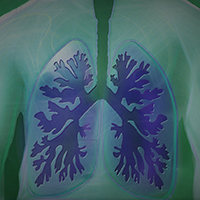Continuous positive airway pressure therapy in the management of hypercapnic cardiogenic pulmonary edema

Submitted: December 8, 2020
Accepted: February 24, 2021
Published: April 1, 2021
Accepted: February 24, 2021
Abstract Views: 4610
PDF: 1387
Publisher's note
All claims expressed in this article are solely those of the authors and do not necessarily represent those of their affiliated organizations, or those of the publisher, the editors and the reviewers. Any product that may be evaluated in this article or claim that may be made by its manufacturer is not guaranteed or endorsed by the publisher.
All claims expressed in this article are solely those of the authors and do not necessarily represent those of their affiliated organizations, or those of the publisher, the editors and the reviewers. Any product that may be evaluated in this article or claim that may be made by its manufacturer is not guaranteed or endorsed by the publisher.
Similar Articles
- Michele Vitacca, Luca Barbano, Daniele Colombo, Olivia Leoni, Enrico Guffanti, Prevalence and variability of use of home mechanical ventilators, positive airway pressure and oxygen devices in the Lombardy region, Italy , Monaldi Archives for Chest Disease: Vol. 88 No. 1 (2018)
- M. Justine, F. Tahirah, V. Mohan, Health-related quality of life, lung function and dyspnea rating in COPD patients , Monaldi Archives for Chest Disease: Vol. 79 No. 3-4 (2013): Pulmonary series
- Alberto Genovesi Ebert, Furio Colivicchi, Marco Malvezzi Caracciolo, Carmine Riccio, Additive beneficial effects of beta blockers in the prevention of symptomatic heart failure , Monaldi Archives for Chest Disease: Vol. 72 No. 1 (2009): Cardiac series
- Donatella Del Sindaco, Giovanni Pulignano, Andrea Di Lenarda, Luigi Tarantini, Giovanni Cioffi, Stefano Tolone, Maria Denitza Tinti, Luca Monzo, Giulia Barbati, Giovanni Minardi, Role of a multidisciplinary program in improving outcomes in cognitively impaired heart failure older patients , Monaldi Archives for Chest Disease: Vol. 78 No. 1 (2012): Cardiac series
- Roberto Valle, Renzo Baccichetto, Sabrina Barro, Alessandro Calderan, Emanuele Carbonieri, Maura Chinellato, Mario Chiatto, Alessandra D’Eri, Francesco Corazza, Massimo D’Atri, Raffaela Drigo, Simeone Fabris, Giuseppe Fabris Gelli, Antonio Lo Giudice, Federica Noventa, Alessandro Pollon, Paolo Santin, Franco Zanardi, Loredano Milani, Heart failure in Eastern Veneto: prevalence, hospitalization rate, adherence to guidelines and social costs , Monaldi Archives for Chest Disease: Vol. 66 No. 1 (2006): Cardiac series
- G.L. Casoni, C. Gurioli, P.N. Chhajed, M. Chilosi, M. Zompatori, D. Olivieri, V. Poletti, The value of transbronchial lung biopsy using jumbo forceps via rigid bronchoscope in diffuse lung disease , Monaldi Archives for Chest Disease: Vol. 69 No. 2 (2008): Pulmonary series
- Paolo Ruggeri, Federica Lo Bello, Francesco Nucera, Michele Gaeta, Francesco Monaco, Gaetano Caramori, Giuseppe Girbino, Hereditary hyperhomocysteinemia associated with nephrotic syndrome complicated by artery thrombosis and chronic thromboembolic pulmonary hypertension: A case report , Monaldi Archives for Chest Disease: Vol. 87 No. 3 (2017)
- Vittorio Palmieri, Antonio Palermo, Patients’ self-evaluation of symptoms, signs and compliance to therapy for heart failure surveillance: A pilot study on identification of worsening heart failure , Monaldi Archives for Chest Disease: Vol. 88 No. 2 (2018)
- Erick Chan, Francesco Giallauria, Carlo Vigorito, Neil A. Smart, Exercise training in heart failure patients with preserved ejection fraction: a systematic review and meta-analysis , Monaldi Archives for Chest Disease: Vol. 86 No. 1-2 (2016): Cardiac series
- Giovanni Pulignano, Maria Denitza Tinti, Donatella Del Sindaco, Stefano Tolone, Giovanni Minardi, Antonio Lax, Massimo Uguccioni, Barriers to cardiac rehabilitation access of older heart failure patients and strategies for better implementation , Monaldi Archives for Chest Disease: Vol. 84 No. 1-2 (2015): Cardiac series
You may also start an advanced similarity search for this article.

 https://doi.org/10.4081/monaldi.2021.1725
https://doi.org/10.4081/monaldi.2021.1725





